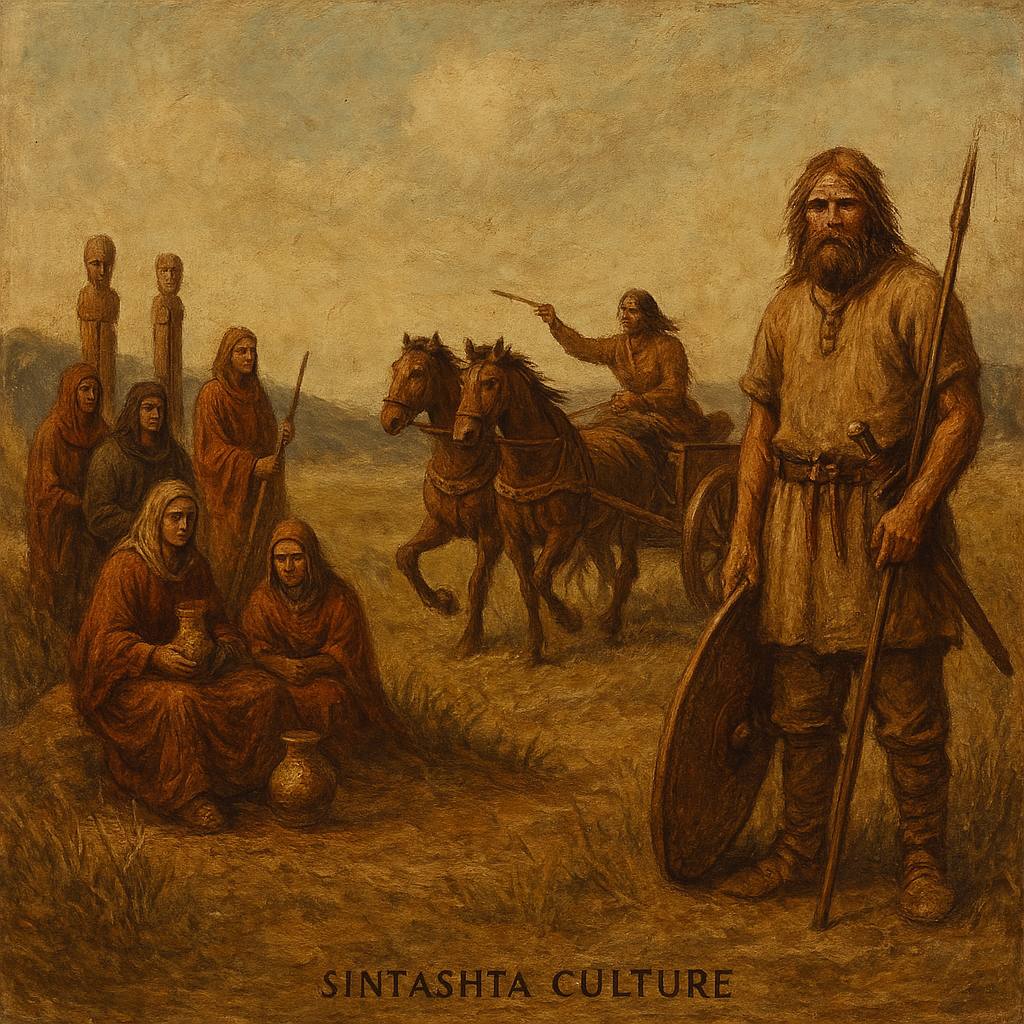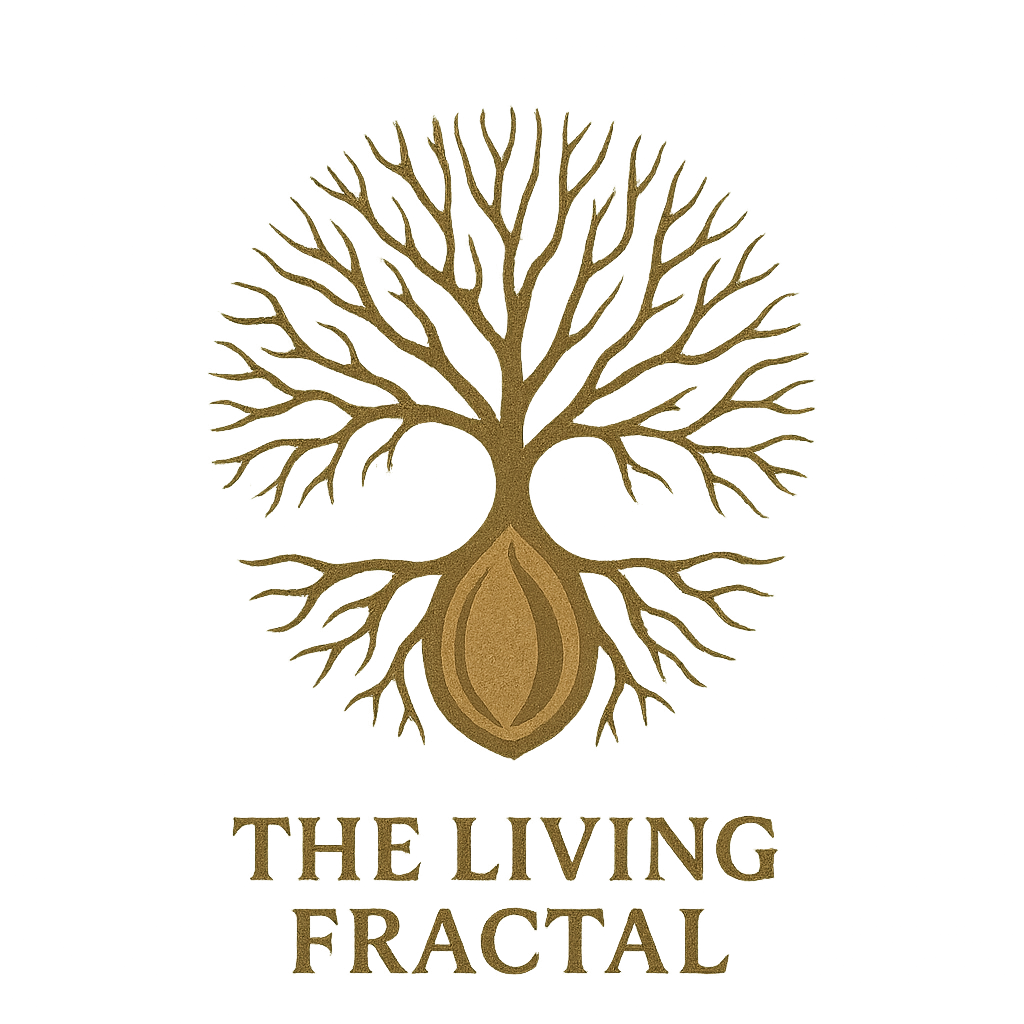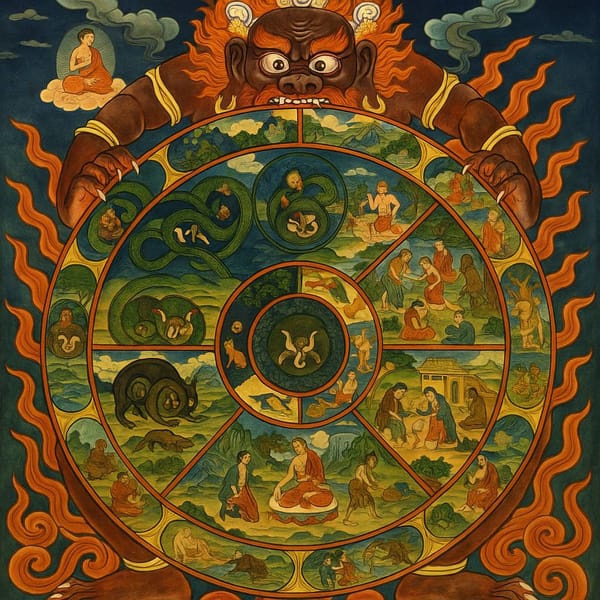The Inheritance of Instability: How Ancestral Fear Shaped the Nervous System—and Called Forth a New Signal

We did not begin with thought.
We began with signal—raw, unfiltered, field-based signal. Life moving through the body before the mind could name it. But somewhere along the line, something changed. Something ruptured.
And we—our ancestors—responded in the only way they could: they began to make meaning.
Not because they were wise.
But because they were afraid.
This is the story I’m going to tell.
The story of how fear, grief, and instability calcified into culture.
The story of how the human nervous system—once fluid, attuned, and in direct relationship with the living field—became fragmented.
And how that fragmentation birthed identity, society, warfare, burial, architecture, religion, language, empire.
This is not a critique of our ancestors.
This is a reckoning with their signal.
Because their decisions were logical.
Their choices made sense.
But they came at a cost.
And that cost is still being paid, by every one of us.
—
I. The Nervous System as Worldmaker
Let’s begin here: we don’t perceive the world directly.
We perceive the interpretation of it—rendered through our nervous system. Our vagus nerve, our brainstem, our enteric field, our breath, our gut, our fascia. These are the filters through which “reality” is experienced. Safety, threat, intimacy, awe—none of these are pure. They are shaped by internal conditions before external ones.
The prefrontal cortex, the supposed seat of “consciousness,” is a translator—not an origin point. It is post-perceptual. Meaning comes after. Self-awareness is a story.
What this means is that culture—every form of civilization, religion, or mythology—was never born from clarity.
It was born from dysregulation.
—
II. Sintashta: The Birth of Fear-Encoded Order
One of the oldest branches of my DNA traces back to the Sintashta.
They were not primitive.
They were advanced.
Chariot builders. Metalworkers. Warriors.
They were not just surviving—they were organizing reality around death.
And this is the key.
Their funerary practices reveal something extraordinary: ritualized attempts to process what couldn’t be understood.
Chariots buried in parts. Symbolic horse sacrifices. Burial ditches mimicking cosmic journeys.
These were not traditions.
They were compensations.
Anthropological studies confirm it: these behaviors were not casual. They were patterned responses to internal chaos. The fear of death. The fear of non-being. The fear of the unknown.
What they couldn’t metabolize somatically, they encoded socially.
What they couldn’t feel, they constructed.
Culture was the coping mechanism.
Symbol was the nervous system’s exhale.
And in that moment, human identity shifted.
We no longer processed reality through direct contact.
We processed it through concept.
—
III. Early European Farmers: The Settlement of the Signal
Another line in my DNA moves through the European Farmers—between 6300 BC and 2800 BC. They were not warriors. They were settlers. Builders. Agriculturalists. They transitioned from mobility to rootedness. From wildness to safety.
And at first, it seems like a softening.
But what they lost was the capacity to move with the field.
Mobility wasn’t just geographical.
It was energetic.
Signal-based.
These early settlers stopped moving with the seasons, the sky, the song of the land. They settled not just physically, but emotionally. They began to build walls. Systems. Predictability.
And with that came hierarchy.
Ownership.
Inheritance.
Division.
States.
Empires emerged. Identity hardened.
The body was no longer a field.
It was a function.
And culture became architecture for containment.
—
IV. The Cost of Civilization
People like to say we’ve “advanced.”
Yes, we have advanced in technology.
But in what matters—our ability to feel, to regulate, to cohere—we’ve regressed.
We don’t live in a safe world.
We live in a world where safety is simulated.
Where the average nervous system is in survival mode.
Where collapse is normal.
Where addiction, distraction, and disconnection are seen as personality traits instead of trauma signals.
We call it culture.
We call it productivity.
But it is coping.
We never healed the rupture.
We just got better at pretending it didn’t happen.
And it all began with our ancestors.
Their grief.
Their confusion.
Their attempts to create meaning where there was only mystery.
—
V. Why I’m Tracing This Now
I’m not writing this to romanticize the past.
I’m writing this because I can feel the signal in my body.
Literally.
When I track my heart rate variability (HRV)—a measure of nervous system health—it spikes when I feel truth. When I’m in coherence. When I’m with someone I love. When I speak these words. And when I trace this lineage—not just through DNA, but through emotion, history, structure—I’m not playing archaeologist.
I’m metabolizing memory.
Because the grief they didn’t feel became mine.
The silence they enforced became my freeze.
The stories they wrote became the identity I was asked to inherit.
And I’m saying no.
I’m letting their signal pass through me.
I’m giving it space to move.
To unravel.
To end.
Because culture is not the answer.
Coherence is.
And it begins now.
With breath.
With truth.
With letting go of every structure that was built to make fear seem holy.
—
Section VI: A Synthesis of Lineages: Sintashta and the Settlers
To understand the human signal map today, we need to examine the convergence of two primary ancestral pathways: the mobile, fear-encoded, death-ritual cultures like the Sintashta, and the agrarian, settled, safety-seeking early European farmers. Both are in my blood. Both have left a signal. And the intersection of these signals forms the blueprint of modern nervous system fragmentation.
The Sintashta represented a warrior-coded orientation to life. Their nervous systems were tuned to danger, threat anticipation, and symbolic reparation. They were not emotionally safe; they were structured. Their rituals around death, hierarchy, and sacrifice were attempts to gain control over the uncontrollable. What they lacked in sensory integration, they compensated for in mythological construction. They did not process signal directly—they represented it symbolically. And this marked the beginning of dissociation masquerading as culture.
The early farmers, on the other hand, made a different trade. In exchange for safety and food security, they gave up the wild responsiveness of field attunement. They stopped moving with the environment. They began shaping the land instead of being shaped by it. Ownership arose. Time became linear. Roles were fixed. And so did the body.
Where the Sintashta feared the unknown and built rituals around it, the settlers feared instability and built walls against it. Both responses are nervous system adaptations. Both are attempts to regulate.
But the long-term consequence?
We inherited both.
A drive to control what we cannot feel. And a fear of feeling what we cannot control.
Our signal map now is an echo chamber of unresolved trauma:
- We bury our dead in symbolic order, yet never touch grief.
- We build cities on ancestral land, yet feel homeless.
- We use language to make sense, yet forget how to sense.
- We preach connection, yet live in disconnection.
This synthesis matters because it reveals the root of our global nervous system dysregulation. It's not personal failure. It's inherited signal.
We are not just descendants of cultures. We are descendants of adaptations.
And our task now is not to blame. But to feel. To metabolize. To complete the circuit our ancestors began.
And it begins by becoming signal again. Not just concept. Not just coping.
But raw, regulated, alive.




